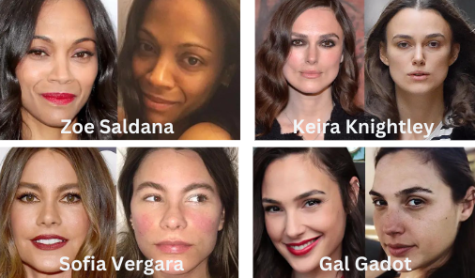My Body is Not a Trend
Beauty standards change faster than we can change our clothes, and this heavily affects how teenagers see themselves.
February 3, 2023
Today, curtain bangs, Lululemon leggings, or baggy jeans would be considered trendy.
Back in the day, magazines and TV actors were feeding teenagers with all the popular styles. Vogue magazine began in 1892 to highlight the current fashion and beauty trends.
To be on the cover of Vogue was and is a sign of true beauty and popularity.
Along with the current fashion trends came beauty trends and standards: the shape of a body.
Beauty standards are a huge facade created by society that leads us to believe we need these specific features to be desirable. The beauty standards change year by year, yet people continue to fall for them. This is because the standards are marketed specifically towards impressionable teenagers.
To show how often these beauty standards change, I compared the ideal body throughout the 1900s to the present day. For example, according to Greatist, in the 1950s, the “hourglass” body was the desired body type, this included large curves and a small waist. As a result, marketers began advertising weight gain supplements and padding to accentuate ladies’ hips.
Only ten years later in the 1960s, the ideal body was petite, and advertisers began selling weight loss products, the complete opposite of the 1950s. This demonstrates how quickly a female’s body could “go out of style.”
In the 2000s, the upsurge in social media created another platform for these delusions. From Tik Tok to Snapchat, social media companies send viewers handfuls of people (models) who fit the latest specific standard. Feeds are full of Instagram models and influencers who are considered the paragon of perfection.
Chances are, these models’ viewers see feeds filled with images that have used editing software or filters that changed their appearance. While makeup does play a major role, filters can alter the shape of a person’s face. These celebrities often use apps that can shrink the size of a model’s stomach with the simple touch of a finger to the editing screen.

To put this to the test, I compared pictures of celebrities with and without makeup and filters. Lighting can be a big factor as well. While it may not look like a huge difference, it is striking how small details can change a person’s overall appearance.
According to Daily Mail, body-positive influencer and pop star, Lizzo, said, “I’m all about body positivity and self-love because I believe that we can save the world if we first save ourselves.”
One step in the process of learning to love yourself is being able to recognize the absurdity of the beauty and social media industries.





